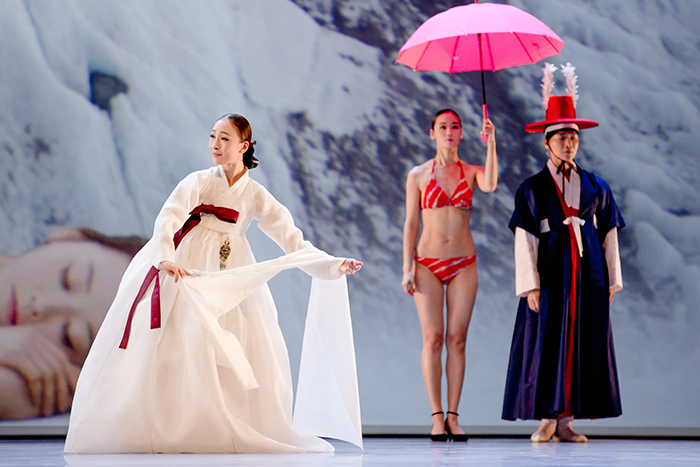
In 'Shigane Nai,' a new performance co-produced by the National Dance Company of Korea and the French Theatre National de Chaillot, past and present forms of traditional Korean dance come together on stage.
Traditional Korean dance has been imbued with French flair.
"Shigane Nai," or "The Age of Time," premiered at the National Theater of Korea on March 23. It was the opening act for the "Year of France in Korea" which takes place in the second half of the "Years 2015-2016 of Korea-France Bilateral Exchanges."
Expressing the "harmony of tradition and modernity," the show was divided into three defined parts. They explored the present and past of traditional Korean dance while spiraling in and out of the bounds of modernity, realism and surrealism.
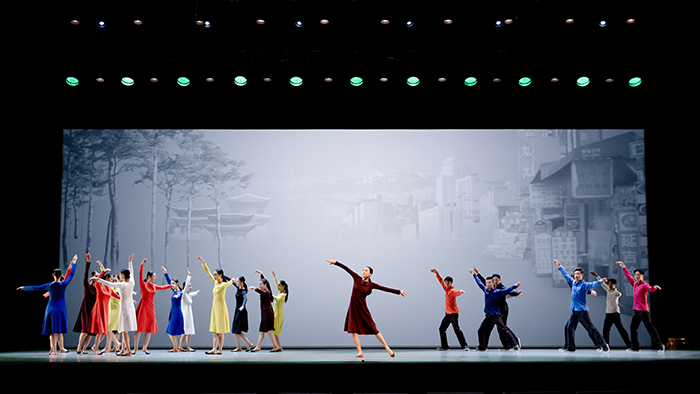
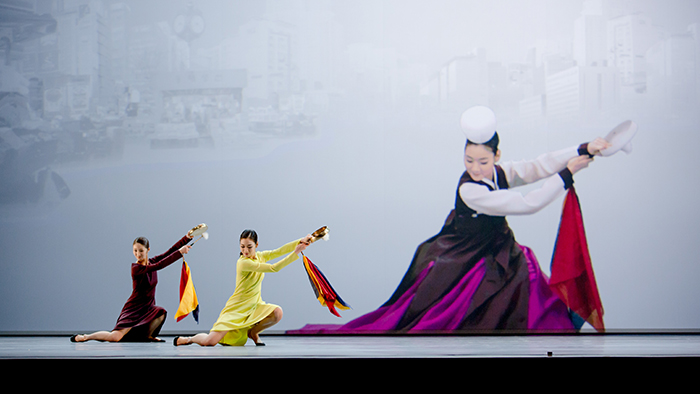
In part one of 'Shigane Nai,' a projection of a traditional dancer in Hanbok performing the dance shows on the big screen while two actual dancers wearing modern dress join in on stage, all in real-time.
The performance began with part one, "The Age of Time," with its festive atmosphere of fun and games. A group of dancers files onto stage wearing colorful dresses and shirts, running this way and that, twirling their arms like cheerful children. While dancing to the rather discordant sounds of modern electronic music, some dancers blurt out phrases like "Can you see me?" and "Look at me!" while their bodies weave in and out on stage.
When the "play" part ended, dancers wearing traditional garments appeared on the big screen on stage to perform traditional dances like the hallyangmu (한량무), the fan dance (부채춤) and the salpuri (살풀이). On cue, the real dancers then took turns joining in with the dances being projected on screen, creating a surreal synchronized duet between the larger-than-life traditional dancer and the modern real dancer on stage. Through this process of layering, the audience was able to see the same dance performed on different time-space continuums, in different artistic forms, all on the same stage.
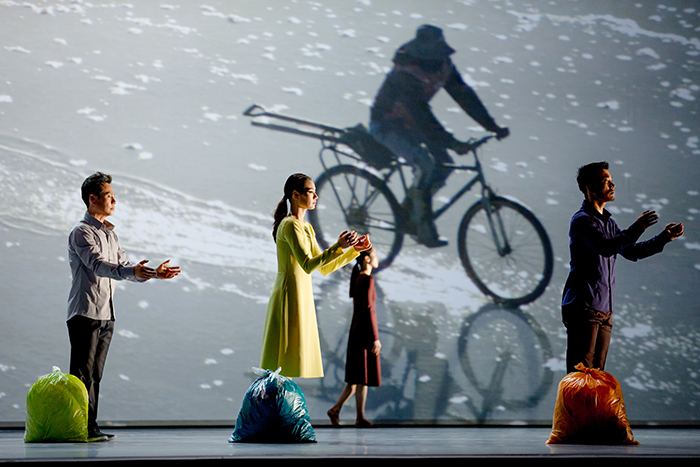
In part two, dancers ruminate on the problems facing humanity today with their constrained movements.
Part two, entitled either "Dreams" or "Souvenirs" in French, turned the mood around entirely, with classical pieces by Mozart and Rachmaninoff playing in the background. On the screen behind and above the dancers were projected images of landfill sites, high-rise buildings and melting glaciers. The dancers conveyed feelings of misery and solitude with their confined movements, using props like trash bags, blindfolds and headbands with flowers.
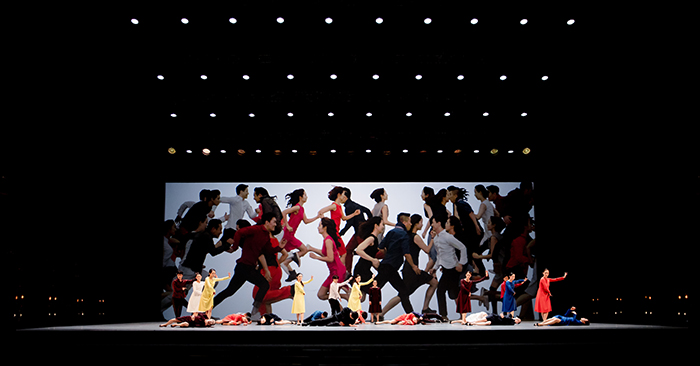
In part three, dancers express the joy of life by dancing in twos to a soundtrack that combines Korean instruments and Ravel's 'Bolero.'
In part three, "Bolero," dancers expressed their joy for life and desire for rhythm to a remixed soundtrack of "Bolero" by French composer Maurice Ravel (1875-1937). By adding sounds from traditional Korean percussion instruments, the French song gradually transformed into the familiar Korean tune "Arirang." After a sequence of dancers performing in twos, the performance came to a close with all the dancers running across the big screen on stage.
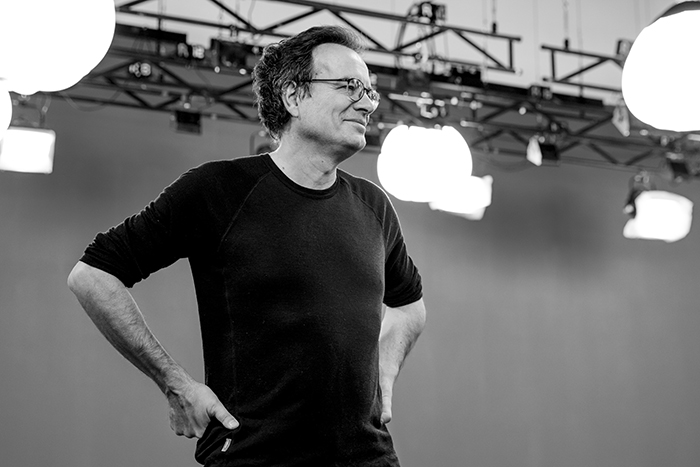
Jose Montalvo, head choreographer of the French Theatre National de Chaillot, oversaw the production of 'Shigane Nai.' He says that it was most important to bring the dancers' memories of traditional dance to the forefront of the choreography.
Choreographer Jose Montalvo of the Theatre National de Chaillot said, "From day one, I could sense the deep roots that form the backbone of traditional Korean dance. My challenge, then, coming into this project, was to create a new vision while preserving the individuality, characteristics and creativity of traditional Korean dance."
"Shigane Nai" will be on stage at the National Theater of Korea until March 27. In June, the show will open in Paris for the closing ceremony of the "Year of Korea in France."
By Lee Hana
Korea.net Staff Writer
Photos: National Theater of Korea
hlee10@korea.kr
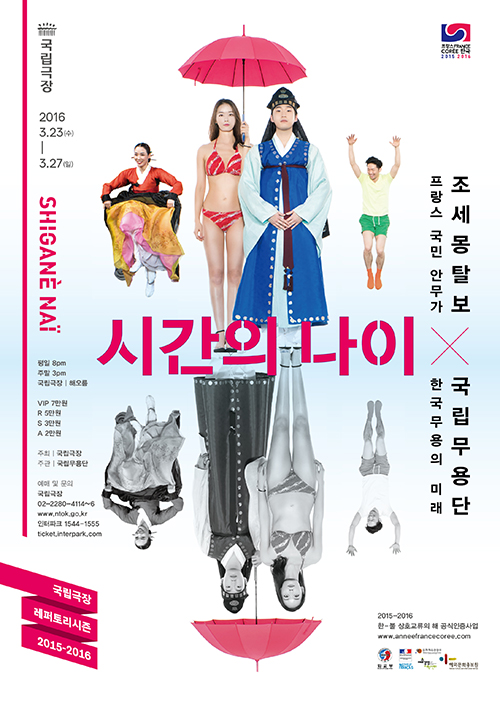
'Shigane Nai' is running at the National Theater of Korea until March 27.